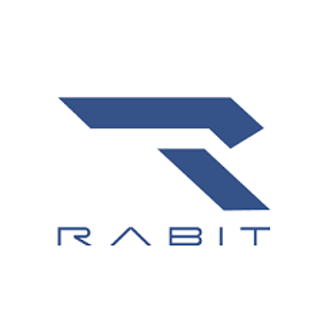If your office software isn’t tailored to your company’s unique workflows, it can actively hurt your team’s efficiency, cause miscommunication, lead to errors, and cost you more in the long run than a well-developed custom software solution would have in the first place.
Poorly chosen off-the-shelf tools or badly built custom software don’t just slow your processes down, they work against your business.
"Why are we still doing this manually?"
Every business owner has had that moment: staring at a screen, wondering why a seemingly simple task takes ten clicks, three apps, and a group of frustrated employees to complete.
If your software feels more like a roadblock than a tool, you're not alone. But here's the thing: your software should work for you, not the other way around.
This article is for business owners, managers, and decision-makers who suspect that their digital tools might be holding them back. We’ll talk about why using software that wasn’t built for your business processes can be a silent killer of efficiency, team morale, and ultimately profitability. And more importantly, we’ll explore what you can do about it.
When the Wrong Tool Feels Right (Until It Doesn’t)
The Hidden Cost of "Good Enough"
Choosing an off-the-shelf software solution might seem like the practical move, especially when budgets are tight. And for a while, it might even feel "good enough."
But let’s be clear: "good enough" software is often a ticking time bomb.
You’ll eventually find yourself:
- Constantly adapting your processes to fit the tool (instead of fitting the tool to your needs);
- Duplicating work across platforms;
- Creating error-prone manual workarounds;
- Experiencing bottlenecks that kill productivity;
- Paying for multiple tools that only partially solve problems.
According to a study by McKinsey, employees spend nearly 20% of their workweek looking for information or tracking down colleagues to help with tasks that could be automated with the right software.
That’s one whole day every week per employee, wasted.
Custom Software Development: Made to Fit
Unlike one-size-fits-all tools, custom software development is about building a solution that fits your exact needs. It's like trading in a department store suit for a tailored one: same purpose, drastically better fit.
Custom software:
- Aligns directly with your business workflows;
- Reduces the number of tools you need;
- Automates repetitive tasks;
- Grows with your business;
- Improves accuracy, speed, and collaboration.
When built correctly, a custom application becomes an extension of your team.
Fast, intuitive, and fully aligned with your goals.
Poorly Managed Custom Projects: Just as Bad (Sometimes Worse)
Of course, not all custom software is automatically good. A poorly built, underdocumented, or mismanaged custom project can be just as disastrous.
Without proper planning, UX design, project management, and post-launch support, custom solutions can spiral into costly tech debt.
That’s why working with an experienced business software development team matters. You want experts who take the time to understand your business processes, build with scalability in mind, and remain involved after the first version goes live.
Real-Life Example: When "Off-the-Shelf" Broke the System
Let’s say you run a mid-sized logistics company. You adopt a well-reviewed inventory management system used by big retailers. It’s packed with features. Too many, in fact.
To make it work, your team:
- Creates spreadsheets to track what the system can’t handle;
- Manually uploads shipping data from another app;
- Needs weekly calls just to keep data consistent.
After six months, your operations manager suggests building a lightweight webapp development solution tailored for your specific logistics process. The new app:
- Integrates with your existing CRM;
- Syncs with shipping APIs;
- Provides real-time inventory views;
- Requires zero spreadsheets.
Productivity increases by 40%. Errors drop. Customer complaints fall. Your team finally breathes again.
Pros & Cons
Off-the-Shelf Software
Pros:
- Quick to deploy, lower upfront cost, pre-tested.
Cons:
- Not tailored to your business, limited customization, hidden costs over time (workarounds, inefficiency, licensing).
Custom Software
Pros:
- Tailored to your processes, more efficient workflows, scalable as your business grows.
Cons:
- Higher initial investment, requires more planning, depends on quality of the development partner.
FAQ: Things Business Owners Ask All the Time
Q: Is custom software only for big companies?
Nope. In fact, small and mid-sized businesses benefit the most because they can leapfrog inefficient processes without the baggage of legacy systems.
Q: How long does custom software take to build?
It depends on the complexity, but with an agile approach, you can start seeing usable features within weeks.
Q: Isn’t it too expensive?
Consider the long-term savings. Less manual work. Fewer errors. Faster workflows. Often, custom tools pay for themselves within a year.
**Q: What if my needs change?
**That’s the beauty of a well-built software: it evolves with your business.
Conclusion: don’t let your tools become your traps
In business, every hour counts. Every click, every delay, every workaround adds up.
Using software that wasn't made for your team doesn’t just slow you down, it actively undermines your goals. It frustrates your team, confuses your processes, and ends up costing you far more than you thought you were saving.
A well-designed, tailored solution isn't just software. It's a competitive advantage.
So next time you're wondering why things feel clunky or why your team keeps complaining about "the system," take a step back. Maybe it’s not them. Maybe it’s the tool.
Are you interested? Get in touch with us!


